In order to generate a more inclusive dataset of Pseudomonas genes mapped to putative in-paralogs and putative orthologs in other Pseudomonas species/strains, we developed a Pseudomonas Orthologous Groups classification system.
To generate ortholog groups, pair-wise DIAMOND searches were run on all genomes in the database to find reciprocal best hits (RBHs) for each gene. These analyses often resulted in multiple candidate genes for RBH status, which were narrowed down by examining the similarity between the query's flanking genes and the hit's flanking genes. If two candidate genes were directly adjacent, they where both accepted as RBHs that involve putative in-parology.
Pairwise intra-genome DIAMOND searches were also performed to acquire in-paralog information (i.e. gene duplications occurring after species divergence). If two genes in one genome were reciprocally more similar to each other than to any gene in the other genomes, the two genes were designated putative in-paralogs. Ortholog groups are built by starting with a seed gene and then adding all genes to which there is a RBH or in-paralog relationship.
Every new gene added to an ortholog group was then treated as a seed gene and the addition process was repeated until all qualifying genes had been added. The result was the development of orthologous groups, specifically generated for Pseudomonas species genomes, which can be used to sort search results.
Pseudomonas Ortholog Group POG001040
| Strain | Locus Tag | Description | Same-Strain Members | Fragment ? | |
|---|---|---|---|---|---|
| Pseudomonas aeruginosa AZPAE14403 | NQ61_RS22010 |
flagellar basal body rod protein FlgC
|
1 member |

|
|
| Pseudomonas aeruginosa AZPAE14404 | NQ62_RS17240 |
flagellar basal body rod protein FlgC
|
1 member |
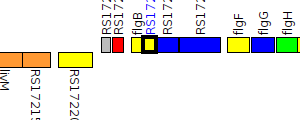
|
|
| Pseudomonas aeruginosa AZPAE14410 | NQ63_RS23180 |
flagellar basal body rod protein FlgC
|
1 member |
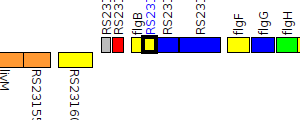
|
|
| Pseudomonas aeruginosa AZPAE14443 | NQ69_RS02130 |
flagellar basal body rod protein FlgC
|
1 member |
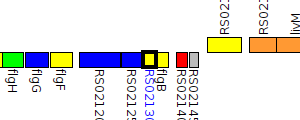
|
|
| Pseudomonas aeruginosa AZPAE14453 | NQ70_RS27995 |
flagellar basal body rod protein FlgC
|
1 member |

|
|
| Pseudomonas aeruginosa AZPAE14509 | NQ74_RS27845 |
flagellar basal body rod protein FlgC
|
1 member |
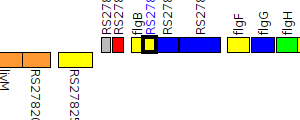
|
|
| Pseudomonas aeruginosa AZPAE14526 | NQ75_RS06595 |
flagellar basal body rod protein FlgC
|
1 member |
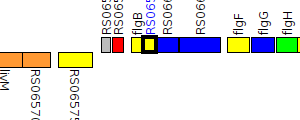
|
|
| Pseudomonas aeruginosa AZPAE14538 | NQ78_RS02155 |
flagellar basal body rod protein FlgC
|
1 member |
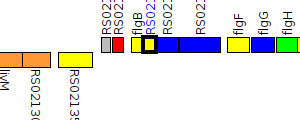
|
|
| Pseudomonas aeruginosa AZPAE14550 | NQ79_RS18590 |
flagellar basal body rod protein FlgC
|
1 member |
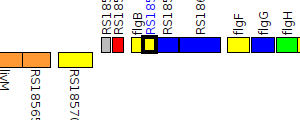
|
|
| Pseudomonas aeruginosa AZPAE14557 | NQ81_RS03740 |
flagellar basal body rod protein FlgC
|
1 member |
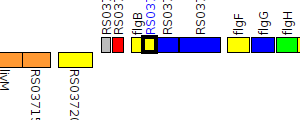
|
|
| Pseudomonas aeruginosa AZPAE14693 | NQ90_RS18395 |
flagellar basal body rod protein FlgC
|
1 member |
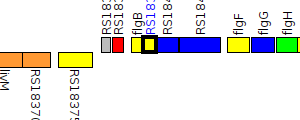
|
|
| Pseudomonas aeruginosa AZPAE14809 | NR28_RS15335 |
flagellar basal body rod protein FlgC
|
1 member |
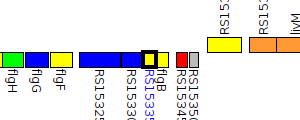
|
|
| Pseudomonas aeruginosa AZPAE14817 | NR36_RS15955 |
flagellar basal body rod protein FlgC
|
1 member |

|
|
| Pseudomonas aeruginosa AZPAE14825 | NR43_RS09020 |
flagellar basal body rod protein FlgC
|
1 member |
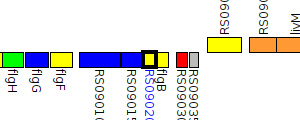
|
|
| Pseudomonas aeruginosa AZPAE14840 | NR58_RS12390 |
flagellar basal body rod protein FlgC
|
1 member |
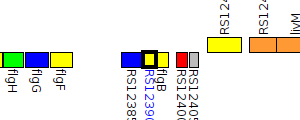
|
|
| Pseudomonas aeruginosa AZPAE14842 | NR60_RS19020 |
flagellar basal body rod protein FlgC
|
1 member |
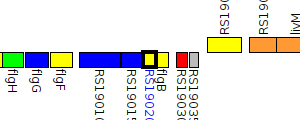
|
|
| Pseudomonas aeruginosa AZPAE14847 | NR65_RS04530 |
flagellar basal body rod protein FlgC
|
1 member |
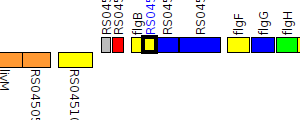
|
|
| Pseudomonas aeruginosa AZPAE14877 | NR93_RS13550 |
flagellar basal body rod protein FlgC
|
1 member |
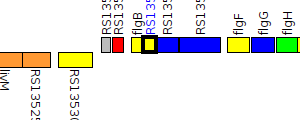
|
|
| Pseudomonas aeruginosa AZPAE14879 | NR95_RS17795 |
flagellar basal body rod protein FlgC
|
1 member |
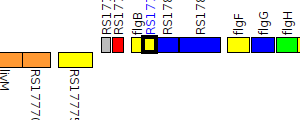
|
|
| Pseudomonas aeruginosa AZPAE14880 | NR96_RS05785 |
flagellar basal body rod protein FlgC
|
1 member |
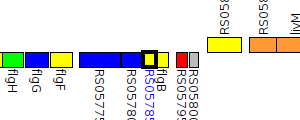
|